 W
WAbandon the Old in Tokyo is a collection of gekiga short stories by manga artist Yoshihiro Tatsumi. It collects eight stories by Tatsumi from 1970, which were serialized in various manga magazines including Weekly Shōnen Magazine and Garo, and was published by Drawn & Quarterly on August 1, 2006. The manga won the 2007 Harvey Award for Best U.S. Edition of Foreign Material, sharing it with the first volume of Tove Jansson's Moomin. It was also nominated for the 2007 Eisner Award for Best Archival Collection/Project – Comic Books.
 W
WAi to Makoto is a Japanese manga series written by Ikki Kajiwara and illustrated by Takumi Nagayasu. It was adapted into a live-action television series in 1974 and into four live-action films in 1974, 1975, 1976 and 2012.
 W
WAlabaster is a manga series written and illustrated by Osamu Tezuka, published in Akita Shoten's Weekly Shōnen Champion from December 1970 to June 1971. Digital Manga successfully crowdfunded the publication of the manga in English in 2015.
 W
WApollo's Song is a manga written and illustrated by Osamu Tezuka. It was originally serialized in Weekly Shōnen King in Japan in 1970 and was published in English translation in 2007.
 W
WAshita no Joe is a Japanese boxing manga series written by Asao Takamori and illustrated by Tetsuya Chiba. The story follows a young man named Joe Yabuki and his boxing career as a Bantamweight.
 W
WAyako (奇子) is a manga trilogy by Osamu Tezuka. It was serialized in Big Comic, a manga magazine published by Shogakukan. It is licensed in North America by Vertical. It is also licensed in France by Delcourt/Akata, in Italy by Hazard Edizioni, and in Brazil by Veneta.
 W
WBlack Blizzard is a Japanese manga written and illustrated by Yoshihiro Tatsumi and published by Hinomaru Bunko in November 1956. It is about two convicts who are handcuffed together and escape after the train they are being escorted on crashes. Written by Tatsumi in twenty days, it is considered to be one of the first full-length gekiga works.
 W
WBlack Cat Detective is a Chinese animated television series produced by the Shanghai Animation Film Studio. It is sometimes known as Mr. Black. The main character, Black Cat Detective, was created by Zhu Zhixiang (诸志祥).
 W
WThe Book of Human Insects is a Japanese seinen manga series written and illustrated by Osamu Tezuka. It is about Toshiko Tomura, the "Woman of Talent", who is able to leech the abilities out of people, constantly reinventing herself. The manga was originally serialized in Akita Shoten's manga magazine Play Comic from May 9, 1970 to February 13, 1971. It has been published in Japan multiple times by many publishers, in either an omnibus edition or two volumes. Vertical published an omnibus edition in North America on September 20, 2011. The manga was adapted into a seven-episode live-action drama in 2011 by WOWOW.
 W
WThe Box Man is a Japanese gekiga manga written and illustrated by Imiri Sakabashira. It is about a man traveling on a scooter with a cat-kappa and a box containing a man with crab claws. The manga was serialized in Seirinkogeisha's alternate manga magazine Ax and collected on October 31, 2004. Drawn & Quarterly published the manga on January 19, 2010.
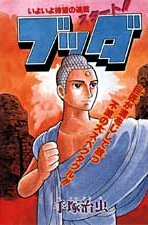 W
WBuddha is a manga drawn by Osamu Tezuka and is Tezuka's unique interpretation of the life of Gautama Buddha, the founder of Buddhism. The critically acclaimed series is often referred to as a visually explicit yet humorous and thought-provoking portrayal of the Buddha's life; the series itself has become a staple text in Buddhist temples for young adults and teens to learn about the Buddha's life. The series began in September 1972 and ended in December 1983, as one of Tezuka's last epic manga works.
 W
WCigarette Girl is a Japanese short story manga collection written and illustrated by Masahiko Matsumoto. Matsumoto originally wrote the stories for several magazines from 1972 to 1974. Seirinkogeisha collected and published these stories on September 20, 2009. Top Shelf licensed the manga in North America in 2010, publishing it on May 24, 2016. The manga has also been published in France by Cambourakis and in Spain by Gallo Nero. The French edition was nominated at the 2011 Angoulême International Comics Festival for "Best Heritage Comic".
 W
WThe Crater is a manga by Osamu Tezuka that began serialization in 1969.
 W
WA Distant Neighborhood is a Japanese manga by Jiro Taniguchi. It was adapted into a live-action French-Belgian film in 2010.
 W
WA Drifting Life is a thinly veiled autobiographical Japanese manga written and illustrated by Yoshihiro Tatsumi that chronicles his life from 1945 to 1960, the early stages of his career as a cartoonist. The book earned Tatsumi the Tezuka Osamu Cultural Prize, and won two Eisner Awards.
 W
WGaro (ガロ) was a monthly manga anthology magazine in Japan, founded in 1964 by Katsuichi Nagai. It specialized in alternative and avant-garde manga.
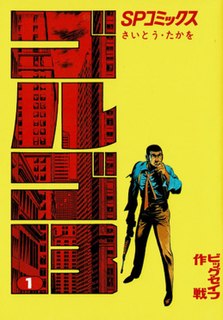 W
WGolgo 13 is a Japanese manga series written and illustrated by Takao Saito, published in Shogakukan's seinen manga magazine Big Comic since October 1968. The series follows the title character, a professional assassin for hire. Golgo 13 is the oldest manga still in publication, and its tankōbon edition was certified by Guinness World Records as the highest number of volumes for a single manga series. Saito said before his death in 2021 that he wanted the manga to continue on without him and previously raised concerns the manga may be unfinished after he passes away. The Saito Production group of manga creators will continue its publication with the assistance of the Big Comic's editorial department.
 W
WGood-Bye is a collection of gekiga short stories by manga artist Yoshihiro Tatsumi. It collects nine stories by Tatsumi from 1971 to 1972. Drawn & Quarterly published the manga in North America on June 1, 2008, with Adrian Tomine as editor and designer. The manga was nominated for the 2009 Eisner Award for Best Archival Collection/Project—Comic Books.
 W
WKamui is a manga series written and drawn by Sanpei Shirato. Set in feudal Japan, it tells the story of a low-born ninja who has fled his clan. The series combines historical adventure with social commentary and themes of oppression and rebellion that reflect Shirato's Marxist convictions.
 W
WLone Wolf and Cub is a Japanese manga series created by writer Kazuo Koike and artist Goseki Kojima. First published in 1970, the story was adapted into six films starring Tomisaburo Wakayama, four plays, a television series starring Kinnosuke Yorozuya, and is widely recognized as an important and influential work.
 W
WLudwig B is a Japanese manga series written and illustrated by Osamu Tezuka as a biographical adaptation of the early life of the composer Ludwig van Beethoven. The manga focuses on Beethoven's struggles and passions as a youth, including the deterioration of his hearing, his relationship with abusive, alcoholic father, and his self-expression through music. The manga began in June 1987 with intentions to encompass the entire artistic path of Beethoven until his maturity, but was interrupted by Tezuka's death in 1989. After Tezuka's death, the manga was left unfinished and published only in Japanese until a Kickstarter campaign funded its translation into English.
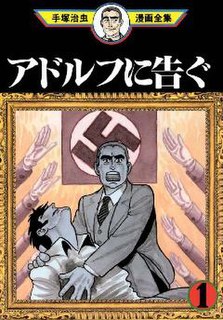 W
WMessage to Adolf , known in earlier English versions as Adolf, is a manga series made by Osamu Tezuka. The story is set before, during, and after World War II and is centered on three men with the name Adolf. Adolf Kamil is an Ashkenazi Jew living in Japan. His best friend Adolf Kaufmann is of both Japanese and German descent. The third Adolf is Adolf Hitler, the dictator of Germany. Adolf also features Sohei Toge, a Japanese reporter, and his quest for documents that could turn the tide of the war. The work explores the themes of nationality, ethnicity, racism, and war, and includes elements of coming of age, spy fiction, and historical drama.
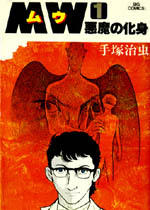 W
WMW is a manga series by Osamu Tezuka. It was originally serialized in Shogakukan's Big Comic in Japan, from 1976–78, and was published in English translation by Vertical Inc. in 2007. Vertical's edition earned it a nomination for Eisner Award at the category "Best U.S. Edition of International Material—Japan," but it lost to Tekkonkinkreet. A Japanese film adaptation was released in July 2009. A thriller, MW follows a fictional Japanese priest, Father Garai, his lifelong connection to serial killer Michio Yuki, and a mysterious chemical weapon "MW" developed by the Occupying American Force in Japan.
 W
WOde to Kirihito is a Japanese manga series by Osamu Tezuka. It was originally serialized in Big Comic in Japan from 1970 to 1971 and was published in English translation in 2006 by Vertical Inc.
 W
WOnward Towards Our Noble Deaths is a one-shot manga written and illustrated by Shigeru Mizuki. In it, Mizuki describes his experiences as a soldier participating in the New Guinea campaign during World War II. He portrays the final weeks of his infantry service as the soldiers were instructed to die for their country to avoid the dishonor of survival.
 W
WPath of the Assassin is a gekiga manga created by the writer Kazuo Koike and the artist Goseki Kojima and published in Weekly Gendai magazine (Kodansha). Unlike their previous collaborations on Lone Wolf and Cub and Samurai Executioner, this story focuses on two historical figures from 16th-century Japan.
 W
WPhoenix is an unfinished manga series by Osamu Tezuka. Tezuka considered Phoenix his "life's work"; it consists of 12 books, each of which tells a separate, self-contained story and takes place in a different era. The plots go back and forth from the remote future to prehistoric times. The story was never completed, having been cut short by Tezuka's death in 1989. Several of the stories have been adapted into anime series and OVAs, and a live-action movie. As of 2007, the entire manga series is available in English-language translations.
 W
WPro Wrestling Superstar Biography is a shōnen manga written by Ikki Kajiwara and drawn by Kunichika Harada. The manga was serialized in Weekly Shōnen Sunday from 1980 volume 23 through 1983 volume 26.
 W
WThe Push Man and Other Stories is a collection of gekiga short stories by manga artist Yoshihiro Tatsumi. It collects sixteen stories by Tatsumi which were serialized in the manga magazine Gekiga Young as well as in self-published dōjinshi magazines in 1969. Drawn & Quarterly collected the stories and published them on September 1, 2005. In 2006, the manga was nominated for the Ignatz Award for Outstanding Anthology or Collection and the Harvey Award for Best American Edition of Foreign Material.
 W
WRed Colored Elegy is a one-shot Japanese manga written and illustrated by Seiichi Hayashi. The manga was serialized in manga magazine, Garo from 1970 to 1971. It is licensed in North America by Drawn & Quarterly, which released the manga on July 8, 2008. It was adapted into an original video animation by Toei Animation on June 21, 2007.
 W
WSamurai Executioner, known in Japan as Kubikiri Asa (首斬り朝), is a 10-volume manga created by writer Kazuo Koike and artist Goseki Kojima, the same team that created the popular Lone Wolf and Cub series. The series was first serialized in Japan, from 1972–1976. Samurai Executioner is set earlier than Lone Wolf and Cub, with the main character of the former series appearing in a chapter of the latter.
 W
WScrew Style is a one-shot gekiga written and illustrated by essayist and mangaka Yoshiharu Tsuge. Screw Style follows of the story of an unnamed boy who goes around several places in war-torn Japan in order to find a doctor who can fix his pierced artery.
 W
WA Single Match is a Japanese short story gekiga manga collection written and illustrated by Oji Suzuki. Suzuki originally wrote the stories during the 1970s for Seirindo's alternative manga magazine Garo, which collected them in 1985. Drawn & Quarterly published the manga in North America on January 4, 2011.
 W
WSkull Man is a shōnen manga series created by Shotaro Ishinomori which first appeared in Weekly Shōnen Magazine in 1970. The hero of the story, whose parents have been murdered, grows up to use his peculiar powers to take revenge. The original Skull Man was one of the first antiheroes to be seen in manga, someone who would sacrifice the lives of innocents in his quest for vengeance.
 W
WSpider-Man: The Manga is a Japanese manga illustrated by Ryoichi Ikegami which retold the story of Spider-Man in a Japanese setting. It was originally published in Japan from January 1970 to September 1971 in Monthly Shōnen Magazine. The comic began as mostly a translation of American Marvel stories, but over time, Ikegami introduced more original material. The manga features Yu Komori as Spider-Man's teen alter ego, and takes place in a Japanese setting.
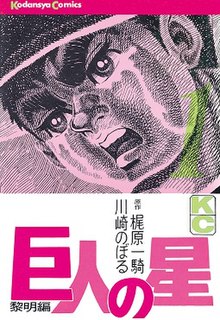 W
WStar of the Giants is a Japanese sports manga series written by Ikki Kajiwara and illustrated by Noboru Kawasaki. It was serialized in Kodansha's Weekly Shōnen Magazine from 1966 to 1971. It is about the actual baseball team Yomiuri Giants using fictional characters. It was launched by the "Yomiuri Group" which at the time owned not only the actual baseball team, but the TV network Nippon Television, the newspaper Yomiuri Shimbun, as well as Yomiuri Telecasting Corporation. It was adapted into an anime television series broadcast in Japan in 1968. It later spawned two anime sequels and different anime movies.
 W
WTiger Mask is a Japanese manga series written by Ikki Kajiwara and illustrated by Naoki Tsuji. The series was first published in Kodansha's Bokura Magazine from 1968 to 1971 and was later published in Weekly Shōnen Magazine from 1970 to 1971. It was later adapted into an anime series by Toei Animation which first aired on TV Asahi on October 2, 1969 and ended its run on September 30, 1971, airing 105 episodes. In real life, the name has been used by a succession of Japanese professional wrestling characters as a gimmick. The Tiger Mask persona is instantly recognizable by its trademark mask, designed to look like a tiger's head, as well as the combination of high flying attacks and martial arts in the ring.
 W
WTrash Market is a volume of semi-autobiographical gekiga short stories by Japanese manga artist Tadao Tsuge. The stories were serialized mainly in the Japanese alternative manga magazine Garo from 1968 to 1972. They were published by Drawn & Quarterly in English on May 12, 2015. Many of the stories are based on Tsuge's life experiences, such as his time at a blood bank, and critics have noted the realism of the stories.